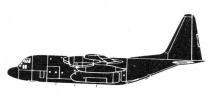Incident Overview

Description
The crew of Hercules ZH873 was tasked to conduct a routine resupply mission in support of operations in Iraq. The aircraft impacted upward sloping terrain short of the runway while conducting a Military Operating Standard (MOS) approach to a semi-prepared Temporary Landing Zone (TLZ), at night on Night Vision Goggles (NVG). The pilots initiated a go-around post the ground impact, and recovered the aircraft to a diversion airfield, Erbil Airport, Iraq. The crew consisted of two pilots, two Weapon Systems Operators, two Aircraft Ground Engineers, two signallers and a movements specialist. The Panel concluded that the accident was caused by a late, incomplete and ineffective flare resulting in a landing short of the TLZ runway. The Panel assessed that this was due to a lack of situational awareness resulting in an inability to judge the flare timing in order to achieve a safe landing on the runway surface. The lack of situational awareness was compounded by a variety of interlinked factors, including IR Landing Light operation or serviceability, CRM, handling technique, light levels, Rad Alt readings and potential visual illusions. Causal Factor: an ineffective flare, being late and Contributory Factors. The Panel identified 15 Contributory Factors to the accident: a. Authorisation. b. Glide Slope. c. Aiming Point. d. Low Ambient Light and Poor Visual Cues. e. Inaccurate advice regarding use of available lighting for NVG approaches. f. Insufficient ground illumination through the non-selection, unserviceability or degradation of the aircraft’s extemal IR lighting. g. The Pilot’s Reliance on Rad Alt Information. h. Lack of Situational Awareness. i. Lack of Clearly Defined Go-Around and Stabilised Approach Criteria. j. Sub-Optimal Crew Resource Management and a Lack of Assertive Behaviour. k. Pressure on the Pilot. l. Disparity in Handling Advice issued across the Hercules Force documentation. m. Flying Supervision throughout the Crew’s Selection and Deployment. n. Lack of Eye to Wheel Height Awareness. o. Air Safety Management and Reporting, particularly a lack of Effective Management of DASORs.
Primary Cause
Ineffective FlareIneffective FlareShare on:



